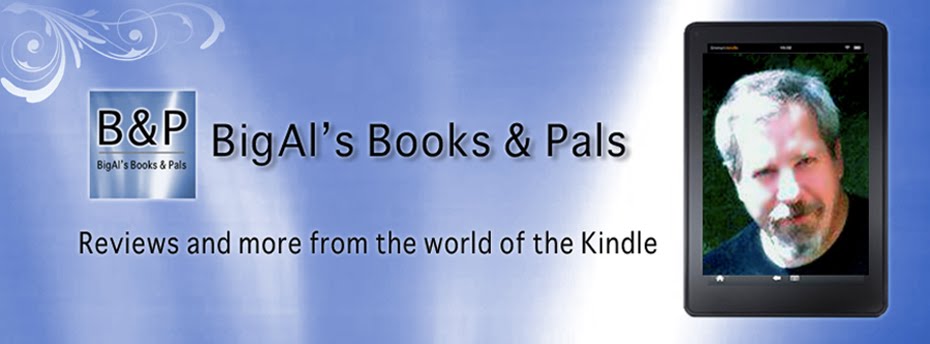Reviewed by: BigAl
Genre: Non-Fiction/Self Help
Approximate word count: 30-35,000 words
Availability
Click
on a YES above to go to appropriate page in Amazon, Barnes & Noble, or
Smashwords store
Author:
“Elda has
been on both sides of the (in)fidelity fence. Her experiences, and those she's
witnessed one time too many, led her to write a credible account of the whys
and why nots before stepping into the infidelity pit. A native Southern
Californian; she was born in Glendale, reared in Lincoln Heights until the age
of two, and lived in Norwalk thereafter.”
For more,
visit the author’s website.
http://eldamlopez.com/
Description:
“A much
needed book for those with a desire to know and those in the throes of desire
re: (in)fidelity in a committed relationship. It includes invaluable
information, statistics, commentary, personal stories (including the author's)
and surveys for examination.”
Appraisal:
The
subtitle, “points to ponder before
you cheat,” says it all. Although the author doesn’t appear
to have any special credentials in this subject area (psychologist,
sociologist, etc), she makes a good case for why people cheat, what the
repercussions are, and the alternative reactions to the root cause. If the goal
is to get the reader to think before jumping, which I think it is based on the
“ponder” in the subtitle, then it might do the trick.
Much of the
author’s case is based on anecdotal evidence, largely stories (both her own and
others) and surveys (although those done by the author were with small samples,
they did help illustrate her points). Were this purely anecdotal I’d think it
had done a good job. Readers could use common sense, compare their own
experience and observation to Lopez’s conclusions, and quite possibly agree
with them.
However,
she didn’t. And that’s where I have some concerns. To bolster some of the
contentions the author quoted various studies and surveys. This added some real
numbers and authority, which is a good thing. These facts are too often not
sourced. If I don’t know anything about where the numbers came from, there is
no way to evaluate their accuracy, relevance, or the author’s interpretation.
And some of these numbers made me want to dig deeper. I’ll give a couple
examples.
The author
is making the case that children from broken homes suffer repercussions.
Several things are mentioned in a section with the subheading of “Other Crucial
Statistics.” First, she says that the possibility of suicide is doubled for
children from broken homes compared to non-broken homes. I’m willing to
believe this statistic is true, but would like to know more about the study it
came from. Based on what we’re given I’m not sure that it shows what it appears
to be intended to show (that cheating, if it leads to a divorce as it often
does, doubles the odds of your children committing suicide). There are some
potential problems with that interpretation. The main one is that correlation
doesn’t prove causation. Another possible interpretation would be that mental
health issues often have genetic roots. Perhaps parents more prone to mental
health problems are also more likely to divorce (while also passing those genes
onto their offspring who are going to be more prone to suicide). Or possibly
not. From this statistic, we can’t tell.
Later in
the same section I found this:
In case of children belonging to fatherless
homes:
o 85 percent have behavioral
disorders
o 90 percent are homeless and
runaway children
o 63 percent commit youth suicide
I saw this
and my BS meter went off the scale. Either these statistics are being
misquoted, there are relevant facts being left out (maybe other factors in the
study besides these children being from fatherless homes), or all the people I
know who grew up in a “fatherless home” did much better than the average.
I think
much of what the author has to say is relevant and her high level conclusions
are correct, so I’d be inclined to recommend reading this book if you’re in its
target audience, but I’m torn. If you promise to take the statistics with a ton
of salt, I’d say go for it. However, if you can’t do that, maybe you’d be
better trying to find an alternative to convince you that cheating isn’t the
way to go.
Format/Typo Issues:
No
significant issues.
Rating: *** Three stars


1 comment:
Big Al, I'm late to the game posting this on your blog, but I want to thank you for your review of my book, THE (IN)FIDELITY FACTOR: Points to Ponder Before You Cheat. You've actually helped my cause. Yes, I'm not a clinician. I wanted to write a book for the everyday person. One who may be intimidated by a psychologist, etc. Re:statistics. I want people to say, What?! Such as yourself. We need to research and question the effects of infidelity further, which is why I wrote the book. So, thank you. A four star rating would have been nice considering all the positive words you did offer up, but the bottom line is you're doing your job, just like I'm doing mine.
Post a Comment